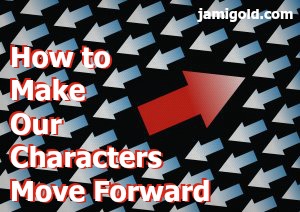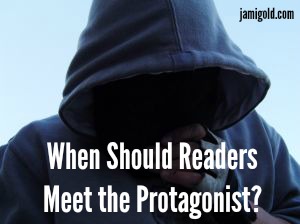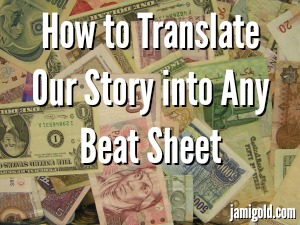I started visiting the original The Bookshelf Muse website by Angela Ackerman and Becca Puglisi soon after they started it, and it’s been fantastic to see their vision grow. So I’m thrilled to welcome Angela here today, as she’s going to share writing-related goodies with us.
Pin It
Read More
My regular readers know that I’m a pantser, but I’m naturally a planner/plotter in the rest of my life. So when a reader asked me how to build a scene list from a beat sheet, I didn’t shudder and scream in horror. Instead for my plotter-loving friends and readers, I figured I’d put together a real answer.
Pin It
Read More
Some authors are able to write coherent stories while drafting. Others put together words willy-nilly and end up with a story that doesn’t hold together. And still others plot but are just writing their chaos down in advance. For all, a strong sense of story structure would help them during planning, drafting, and/or revisions.
Pin It
Read More
My Elements of a Scene Checklist helps us identify whether a scene is truly necessary and contributing to our story by making sure it fulfills a story purpose. The same judgment criteria can apply to subplots as well. Let’s take a look at how can we make sure our tangents and subplots are adding to the story and not acting as a distraction.
Pin It
Read More
One of my most popular posts is for my Romance Beat Sheet, but one of my readers asked if I could create a Scrivener template to go along with the Romance Beat Sheet. Yes! If you’re a romance author and use Scrivener for drafting your stories, today’s post is for you.
Pin It
Read More
Whatever happens in the Climax is often the reason we decided to write the story back when it was just a twinkle in our muse’s eye. But just before the beat of the Climax, our character experienced the Black Moment/Crisis, where they gave up. How do we get them to recommit to the story goals?
Pin It
Read More
Stories with multiple major characters—with their own point-of-view (POV) scenes—can make story structure complicated. Do we have to make beat sheets for each character? As a romance author, I write with multiple POVs all the time, so let’s see if we can figure out how to make beat sheets work in those situations.
Pin It
Read More
One technique for drafting or editing our stories into shape is using beat sheets, but it can be tricky to understand how to use them. Here’s a round-up beat sheet and story structure resources that might help us understand beat sheets.
Pin It
Read More
Most stories open with the protagonist on page one, but every once in a while, our story seems to work best if we start with another character. If we understand why the protagonist usually works best as the point-of-view character for the first page, we might be able to remake those exceptions into stronger openings.
Pin It
Read More
Is a Catalyst the same thing as an Inciting Incident? (Answer: Yes.) How do I know? It’s not because there’s a secret cheat sheet with translations for every beat sheet term. *smile* If we know the functions beats fulfill in a story, we’ll always know where a story event belongs on a beat sheet.
Pin It
Read More










